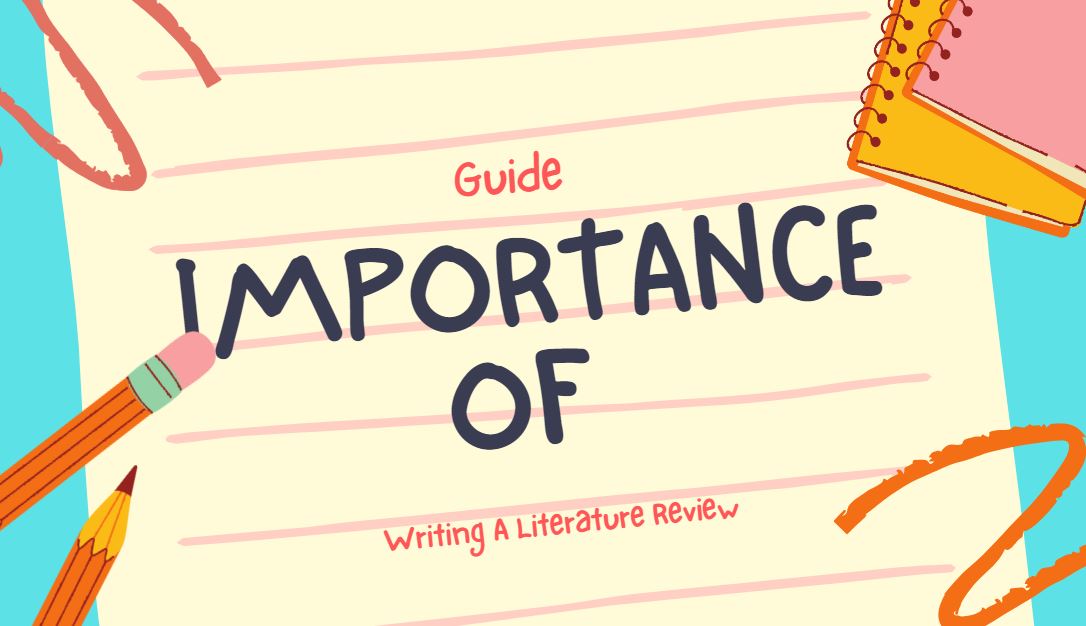
When you write a research paper, there’s a part called the literature review that is very important. This section is where you show what other people have already discovered about your topic.
It’s like building a foundation for a house: you need a solid base to make sure everything else stands strong. In this article, I’ll explore why a literature review is so important, what it should include, and how to write one in a way that’s easy to understand.
What is a Literature Review?
Definition and Purpose
A literature review is a summary of all the research and studies that have been done on a particular topic. Its main purpose is to:
- Show What’s Known: It helps you see what other researchers have already learned about your topic.
- Find Gaps: It helps you find out what hasn’t been studied yet, so you can explore those areas in your own research.
- Set Up Your Research: It gives a background for your own research, showing how your study fits into the bigger picture.
Types of Literature Reviews
There are different types of literature reviews, each with a specific focus:
- Narrative Literature Review: This type gives a general overview of the topic and discusses main ideas and findings.
- Systematic Review: This involves a detailed and organized way of looking at all relevant research on a specific question.
- Meta-Analysis: This combines results from many studies to provide a clearer picture of the research question.
- Scoping Review: This maps out key ideas and evidence in a broad area of research.
Why is a Strong Literature Review Important?
Sets the Stage for Your Research
A good literature review helps you understand the background of your topic. It’s like knowing the history of a place before you visit it. By looking at what others have already discovered, you can see where your research fits in.
Finds What’s Missing
One of the main jobs of a literature review is to find out what’s missing from current research. This way, you can highlight these missing pieces and show why your research is needed.
Helps with Research Questions
A strong literature review helps you come up with specific questions for your own research. By knowing what others have studied, you can create better questions that are focused and important.
Provides a Structure
A well-organized literature review provides a framework for your research. It helps you plan how to approach your study and what methods to use.
Adds Credibility
A detailed literature review makes your research look more credible. It shows that you’ve done your homework and understand the topic well.
How to Write a Strong Literature Review
Finding the Right Sources
- Choose Keywords: Start by picking the key words related to your topic. These will help you find relevant research.
- Use Research Databases: Search for studies using databases like Google Scholar or your school library’s online resources.
- Check References: Look at the reference lists in the studies you read. They can lead you to other important research.
Choosing Good Sources
- Relevance: Make sure the sources you use are related to your topic and contribute useful information.
- Credibility: Pick sources from reliable and respected authors or organizations.
- Publication Date: Include recent studies to reflect the latest information, but don’t ignore older important works.
Organizing Your Review
- By Theme: Group studies based on common themes or topics. This helps in discussing different aspects of your topic.
- By Time: Arrange studies by when they were published to show how ideas have changed over time.
- By Method: Organize studies by their methods to compare different research approaches.
Writing the Literature Review
- Introduction: Start by introducing your topic and explaining why the literature review is important.
- Body: Discuss the studies you found. Highlight key findings, methods, and how they relate to each other and your own research.
- Conclusion: Summarize what you’ve learned from the literature review, point out gaps in the research, and explain how your study will address these gaps.
Citing Your Sources
- Follow Citation Styles: Use the citation style required by your school or teacher, like APA or MLA, to give credit to the authors of the studies you used.
- Avoid Plagiarism: Make sure to give proper credit for ideas and findings to avoid plagiarism.
Common Mistakes to Avoid
Missing Important Studies
One common mistake is not including important studies. Make sure to do a thorough search so you don’t miss key information.
Just Summarizing
Don’t just list what each study says. Instead, analyze and connect the information to show how it fits together.
Disorganization
A disorganized review can be confusing. Use clear headings and organize your review logically to make it easy to follow.
Not Identifying Gaps
If you don’t point out what’s missing in the research, your review may not show why your study is needed. Be sure to highlight these gaps.
Tips for a Better Literature Review
Ask for Feedback
Get help from teachers, classmates, or family members to improve your literature review. They can offer helpful suggestions.
Update Regularly
Keep your literature review updated with new research and revise it as needed.
Stay Organized
Keep track of your sources and organize them well. This will make it easier to write and reference your literature review.
Use Tools
Consider using tools to manage your references, like citation managers, to help keep everything in order.
A strong literature review is a crucial part of a research paper writing. It sets up your research by summarizing what’s already known, finding gaps, and helping you ask important questions.
By carefully selecting and organizing your sources, and avoiding common mistakes, you can write a literature review that supports your research effectively. With practice and attention to detail, you’ll be able to create a literature review that makes your research stand out.